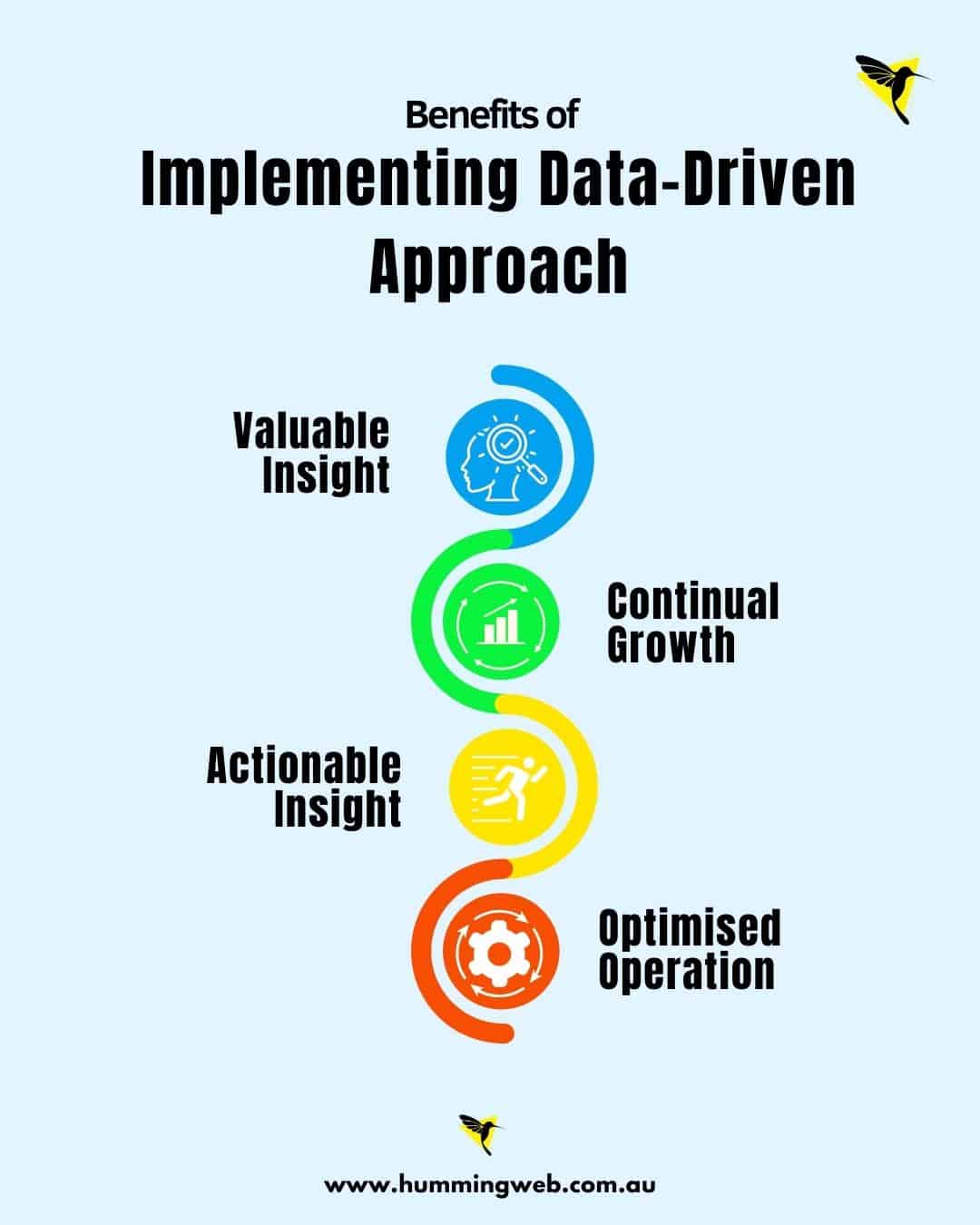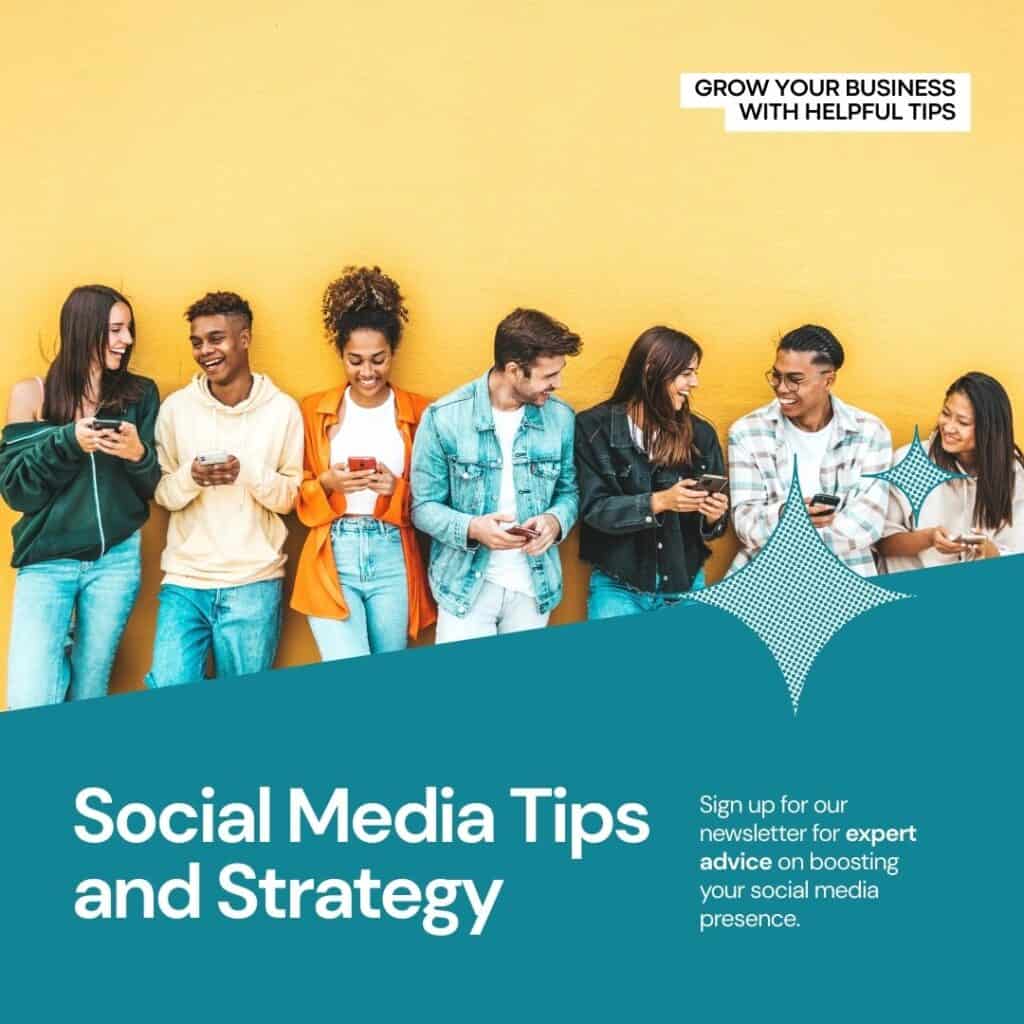In the ever-evolving landscape of social media, it is crucial for businesses and individuals to stay updated on the latest best practices. It’s important to understand the trends and strategies that will help us navigate the social media landscape effectively. This blog post will provide a comprehensive overview of the social media best practices for your business to grow, ensuring that you stay ahead of the game and maximize your online presence.
What are the best practices for social media marketing?
1. Embrace Video Content

In today’s digital landscape, visual content continues to dominate social media platforms, capturing users’ attention and driving higher levels of engagement. It’s more important than ever for businesses and individuals to leverage the power of video to captivate their audience and maximize their online presence.
Utilize Various Video Formats to make the most of visual content on social media, consider utilizing various formats. Short-form videos on social platforms such as TikTok, YouTube shorts, Instagram, and Facebook Reels, have become increasingly popular due to their ability to convey information quickly and creatively.
These bite-sized videos are perfect for grabbing users’ attention and delivering your message in a concise and engaging manner. Live streaming is another powerful tool for creating real-time interactions with your audience.
2. Prioritize Personalized and Authentic Content

In today’s highly competitive social media era, capturing and maintaining the attention of your target audience requires a personalized and authentic approach. Prioritizing content that resonates with your audience’s values, interests, and pain points is paramount to building trust, fostering loyalty, and maximizing your online presence.
To effectively prioritize personalized and authentic content, consider the following strategies:
- Tailor content to resonate: Understand your audience demographics and psychographics to create content that directly addresses their needs and desires.
- c (UGC): Encourage your audience to share their experiences, reviews, and testimonials, showcasing them across social media platforms to add authenticity and social proof to your brand.
- Offer behind-the-scenes insights: Share candid moments, behind-the-scenes footage, and employee spotlights to provide a genuine and authentic look into your company culture, fostering a sense of connection and familiarity with your audience.
- Show your values: Express your brand’s core values and take a stance on important social issues. Support causes that align with your brand and communicate purpose-driven initiatives to attract like-minded individuals who will support and advocate for your brand.
By implementing these strategies, you can prioritize personalized and authentic content, capture your audience’s attention, build trust, foster loyalty, and maximize your online presence.
3. Leverage Influencer Social Network Marketing
This has emerged as a powerful strategy for expanding reach and building credibility on social media platforms. Collaborating with influencers who align with your brand values and have an engaged and relevant audience can amplify your message, increase brand awareness, and drive conversions.
To leverage Social media partnerships effectively, start by identifying influencers who share synergy with your brand and have an authentic connection with their followers. Collaborate with them to create compelling content that resonates with their audience while seamlessly integrating your brand messaging. Building long-term relationships with influencers can further enhance authenticity and advocacy.
By leveraging social media partnerships, you can tap into established credibility and connect with a wider audience, ultimately driving organic growth, building trust, and increasing brand visibility on social media.
4. Harness the Power of Stories
Stories type of content has become a ubiquitous feature across social media platforms, enabling brands to connect with their audience on a more casual and spontaneous level. Leverage the power of stories by sharing behind-the-scenes moments, product updates, and limited-time offers.
Make use of interactive elements like polls, quizzes, and swipe-up links to engage your audience and encourage participation. Stories allow for immediate and immersive content consumption, providing a unique opportunity to create a sense of urgency, exclusivity, and authenticity. By incorporating stories into your social media content strategy, you can captivate your audience and cultivate a deeper connection with them.
5. Implement a Data-Driven Approach

To maximize your social media success, it’s crucial to adopt a data-driven approach. Leverage analytics tools to track and analyze your social media performance and gather valuable insights. Use these insights to identify the most effective content, optimal posting times, and platforms that resonate with your audience.
By continuously monitoring and adapting your strategy based on data-driven insights, you can ensure that you’re making informed decisions and optimizing your efforts for maximum engagement and results. Embracing data-driven decision-making will help you stay ahead of the competition and drive the growth of your online presence.
6. Utilize AI-powered tools for content creation and scheduling

In an era where time is of the essence, AI-powered tools offer invaluable assistance in streamlining content creation and scheduling processes. These tools leverage the capabilities of artificial intelligence to analyze data, understand audience behavior, and generate content ideas tailored to your specific needs.
AI-powered tools not only save precious time but also ensure that your content remains engaging and relevant to your audience. Moreover, these tools can optimize your posting schedule by analyzing data on audience activity, thereby maximizing the reach and impact of your content. By utilizing AI-powered tools, you can enhance your content creation and scheduling efficiency, leading to improved engagement and better overall performance on social media.
7. Focus on micro-influencers for targeted and authentic marketing
In the evolving landscape of social media marketing, micro-influencers have emerged as powerful allies for brands seeking targeted and authentic connections with their audience. With their smaller but highly engaged followings, micro-influencers offer a more niche appeal and genuine influence.
By collaborating with micro-influencers who align with your brand’s values and target demographics, you can leverage their influence to drive engagement, increase brand awareness, and generate conversions. Their recommendations and endorsements feel authentic and trustworthy to their followers, fostering stronger connections.
Emphasizing partnerships with micro-influencers enables you to tap into their dedicated communities, build credibility, and create impactful marketing campaigns that resonate with your target audience.
8. Implement social commerce strategies for seamless shopping experiences

As social media platforms continue to evolve, they are integrating more e-commerce features, offering brands the opportunity for seamless shopping experiences directly on social media. It is crucial to harness these social commerce strategies to meet the growing consumer demand for convenience and instant gratification.
By utilizing these features, you can showcase your products or services, provide detailed descriptions, and enable easy purchasing options without redirecting users to external websites. This streamlined approach reduces friction in the purchasing journey and increases the likelihood of conversions.
Additionally, social commerce strategies allow you to leverage user-generated content, customer reviews, and social proof to build trust and influence purchasing decisions. By offering a seamless shopping experience directly within the social media environment, you can provide a convenient, one-stop-shop solution for your audience, resulting in higher engagement and improved sales performance.
9. Engage in meaningful conversations and community building
In the fast-paced world of social media, it’s crucial to go beyond posting content and actively engage in meaningful conversations with your audience. Building a strong community fosters brand loyalty and advocacy. Promptly respond to comments, messages, and mentions, and actively participate in discussions.
Actively listen to your audience’s feedback, address their concerns, and show genuine interest in their opinions. By engaging in conversations, you can strengthen relationships, build trust, and create a sense of belonging within your community.
Additionally, encourage user-generated content and actively involve your audience in your brand’s story. By fostering a sense of community, you can create a loyal following and establish a positive reputation on social media.
10. Optimize content for each platform’s requirements
In the dynamic world of social media marketing, it’s crucial to optimize your content for each platform’s unique requirements. Tailoring your content to suit the specific formats and preferences of platforms like Instagram, Facebook, Twitter, and LinkedIn can significantly enhance your reach and engagement.
By understanding the nuances of each platform, such as ideal image sizes, video lengths, and character limits, you can ensure that your content appears polished and professional. Additionally, adapting your content to cater to the demographics and interests of each platform’s user base strengthens its relevance and resonance.
By optimizing content for each platform’s requirements, you can maximize its impact, improve user experience, and effectively connect with your target audience while staying ahead in the ever-evolving world of social media marketing.
11. Customer-Centric Approach
A Customer-Centric Approach in social media best practices entails putting the customer at the center of all marketing efforts. This means actively engaging with customers on social media platforms, promptly responding to their inquiries or messages, and taking their feedback into consideration. It also means tailoring content and campaigns to meet the needs and preferences of the target audience. By adopting a customer-centric approach, businesses can foster stronger relationships with their customers, increase customer loyalty, and ultimately improve overall brand perception in the digital space.
12. Social Listening & Responding
Social listening and responding are crucial aspects of effective social media management. When it comes to social listening, it is essential to closely monitor conversations, mentions, and trends related to the brand or industry. By attentively listening to the audience, businesses can gain valuable insights and feedback, allowing them to adapt their strategies accordingly. Moreover, prompt and personalized responses to customer queries, comments, and complaints demonstrate attentiveness and commitment, helping to build trust and loyalty.
By actively engaging with the audience and addressing their needs, businesses exhibit a customer-centric approach, fostering stronger relationships and generating positive word-of-mouth. Therefore, social media best practices warrant continuous monitoring and timely responsiveness to maximize engagement and drive business success.
13. Personalized Messaging
Personalized messaging is one of the best practices in social media. It involves tailoring messages to the specific needs and preferences of individual users. By doing so, businesses can create a more targeted and engaging experience for their audience. This can be achieved by segmenting the audience based on demographics, interests, or previous interactions, and then customizing the content accordingly.
This approach adds a personal touch to the messaging, making users feel valued and understood. It also increases the likelihood of them engaging with the content and taking desired actions. Personalized messaging not only improves user experience but also enhances brand loyalty and drives conversions in the social media space.
14. Privacy and Data Protection

Social media best practices for privacy and data protection are essential in today’s digital age. Firstly, it is crucial to carefully review and adjust privacy settings on all social media platforms to ensure that personal information is only accessible to intended parties. Secondly, users should be cautious about the information they choose to share online and avoid sharing sensitive data such as addresses, phone numbers, or financial details.
Furthermore, regularly updating passwords and enabling two-factor authentication can provide an additional layer of security. Lastly, being mindful of the information accessed through social media ads and third-party applications will help mitigate potential privacy and data breaches. By following these best practices, individuals can safeguard their personal information and reduce the risk of falling victim to privacy violations.
15. Social Commerce
Social commerce refers to the use of social media platforms for the purpose of buying and selling products or services. It is crucial for businesses to understand and implement best practices when engaging in social commerce. One important practice is to optimize social media profiles by providing detailed and accurate information about the products or services being offered.
Additionally, businesses should create engaging and visually appealing content that effectively showcases their products. It is also important to actively engage with customers by responding to comments and messages in a timely manner. Finally, businesses should monitor and analyze social media metrics to assess the success of their e-commerce efforts and make necessary adjustments to optimize results.
17. Social Media Advertising & Targeting
Social media advertising and targeting are essential components of effective digital marketing strategies. To achieve optimal results, it is crucial to adhere to social media best practices. Firstly, it is important to define and understand the target audience. This involves conducting thorough research to identify demographics, interests, and preferences. Secondly, it is essential to develop relevant and engaging content that resonates with the audience.
This includes creating visually appealing ads, using persuasive copywriting, and incorporating appropriate hashtags and keywords. Additionally, monitoring and analyzing metrics is crucial to evaluate the effectiveness of campaigns and make necessary adjustments. Finally, maintaining a consistent and active social media presence is vital for building brand visibility and establishing credibility with the target audience. By following these best practices, businesses can maximize the impact of their social media advertising and targeting efforts.
Continually refine your advertising strategies on social media platforms to reach the right audience. Utilize audience targeting options, retargeting, and lookalike audiences to maximize your ad effectiveness.
Remember, social media platforms are ever-evolving. It’s important to adapt and stay up-to-date with the latest trends, technology advancements, and changes in user behavior to effectively carry out your social media marketing.
18. Develop a social media strategy
A well-defined social media strategy is essential for achieving your marketing goals. It involves setting clear objectives, identifying your target audience, and determining the most effective channels and content types to reach them. By developing a solid strategy, you can ensure that your efforts align with your overall business objectives.
19. Utilize various social media platforms
Gone are the days when Facebook was the only social media platform to focus on. It is essential to explore other platforms such as TikTok, YouTube, Instagram, LinkedIn, and Twitter to reach a wider audience. Each platform caters to different demographics and offers unique features that can enhance your marketing efforts.
20. Create engaging social media content
No matter which social media platform you use, creating engaging content is key to capturing your audience’s attention. Use a mix of multimedia elements including images, videos, and infographics to make your posts visually appealing. Your content should be informative, entertaining, and aligned with your brand’s values and voice.
21. Create a strategic social media calendar
A strategic social media calendar is an essential tool for businesses looking to maximize their online presence. It helps companies plan and organize their social media content and ensures a consistent and cohesive brand message across different platforms. By creating a calendar, businesses can schedule posts and campaigns in advance, allowing them to stay ahead of the game and be prepared for important dates and events. This calendar also allows companies to track their posting frequency and evaluate the success of their campaigns. Additionally, a it provides a clear overview of the content that will be posted, making it easier to brainstorm ideas, incorporate trends, and maintain engagement with followers. In a world where social media plays a pivotal role in marketing strategies, a strategic social media calendar is a must-have tool for any business.
22. Analyze social media analytics
Social media analytics provides valuable insights into audience demographics and behavior. By examining data such as age, gender, location, and interests, businesses can gain a deeper understanding of their target audience. This knowledge allows companies to tailor their content and messaging to better connect with their followers. Information from analyzing analytics enables businesses to identify successful strategies and tweak their approach to maximize engagement and reach. By regularly examining analytics, companies can stay informed and make data-driven decisions to improve their social media presence and ultimately achieve their marketing goals.
23. Keep Upto Date With Social Media Trends
Social media is constantly evolving, and staying on top of these trends can help businesses and individuals stay relevant and connect with their target audience. With new platforms, features, and algorithms being introduced regularly, it is important to stay informed and adapt your strategies accordingly. By staying up to date with social media trends, you can anticipate changes, explore new opportunities, and maintain a competitive edge. Whether it’s engaging with your audience through live videos, utilizing influencer marketing, or leveraging the power of hashtags, being aware of the latest trends and topics will help you create impactful and successful social media campaigns.
What are the key trends in social media for 2023?

1. Video content is on the rise
Visual content is expected to dominate social media platforms. With the increasing popularity of short-form videos on platforms like TikTok and Reels, businesses can leverage this trend to capture their audience’s attention. Consider creating engaging visual content that is visually appealing and tells a compelling story.
2. Influencer marketing is becoming more popular
This has been on the rise in recent years and shows no signs of slowing down this year. Collaborating with influencers who have a strong following and align with your brand values can significantly boost your reach and credibility. However, it’s important to choose influencers who are relevant to your target audience and maintain a genuine connection with their followers.
3. Increased focus on social media analytics
As social media becomes more integral to marketing strategies, the need for actionable insights through analytics has also grown. This year businesses will place greater emphasis on monitoring and analyzing their social media performance to make data-driven decisions. Utilize social media analytics tools to measure key metrics such as engagement, reach, and conversion rates to optimize your strategy.
How can I effectively manage my social media accounts?
1. Use a social media management tool
Managing multiple social media accounts can be overwhelming without the right tools. In this year, businesses should invest in a social media management tool that allows them to schedule posts, track performance, and engage with their audience from a centralized platform. These tools streamline the management process and help save time and effort.
2. Regularly monitor and engage with your audience
Social media is not just about posting content; it’s also about building relationships with your audience. Make it a priority to respond to comments, messages, and mentions promptly. Engage in conversations, ask questions, and show genuine interest in your followers. This will help foster a loyal and engaged community around your brand.
3. Maintain a consistent posting schedule
Consistency is key when it comes to social media marketing. Create a social media calendar outlining your posting schedule. Post consistently across your chosen platforms to keep your audience engaged and build anticipation. Experiment with different posting times to determine the best time to reach your target audience.
What are the top social media channels to focus on?
1. Facebook

Despite the rise of other platforms, Facebook continues to be a dominant force in the social media landscape. With its extensive user base and diverse advertising options, Facebook should remain a priority for businesses in 2023.
2. Instagram

Instagram’s visual-centric nature makes it an ideal platform for businesses to showcase their products and connect with their target audience. With the introduction of features like Reels and Instagram Shopping, it is crucial to focus on building a strong presence on Instagram in 2023.
3. LinkedIn
LinkedIn is not just a platform for job seekers and professionals; it has evolved into a powerful marketing tool. In 2023, businesses should leverage LinkedIn for networking, establishing thought leadership, and reaching a professional audience.
4. TikTok

TikTok is a popular social media platform known for short-form videos, creative challenges, and viral trends. Users can easily create, share, and discover engaging content on various topics, making it a vibrant and dynamic space for entertainment and expression.
5. YouTube

YouTube is a popular video-sharing platform that allows users to upload, view, and share a wide range of content. With billions of hours of video watched daily, it has become a hub for entertainment, education, and communication. Creators can build a global audience, while viewers enjoy a vast array of content, from tutorials and music videos to vlogs and documentaries.
How can I create successful social media marketing campaigns?
1. Define your target audience
Before launching any marketing campaign, it is essential to clearly define your target audience. Understand their demographics, interests, and pain points to tailor your messaging and content accordingly. This will ensure that your campaigns resonate with the right people.
2. Use compelling visuals and captivating copy
In the digital world, attention spans are shorter than ever. To grab your audience’s attention, use compelling visuals that are eye-catching and tell a story. Pair these visuals with captivating copy that highlights the unique value proposition of your product or service.
3. Leverage user-generated content
User-generated content (UGC) is a powerful tool for building trust and engagement with your audience. Encourage your followers to share their experiences and showcase their content related to your brand. This not only builds a sense of community but also provides authentic content that can resonate with potential customers.
Social media practices continue to evolve, emphasizing the importance of a well-crafted social strategy. A skilled social media manager stays updated with the latest social media trends and understands the diverse nature of each social channel. To engage audiences effectively, businesses must use social media to share a variety of content types, such as engaging visuals, interactive posts, and informative videos. By optimizing their social media posts for different social networks, companies can capitalize on the unique characteristics of each platform and foster meaningful connections with their target audience.
Conclusion
In conclusion, staying ahead of the game in social media marketing requires businesses to adopt proven best practices while keeping an eye on emerging trends. By developing a comprehensive social media strategy, utilizing the right platforms, creating engaging content, and analyzing the results, businesses can effectively leverage the power of social media to achieve their marketing objectives in 2023.


